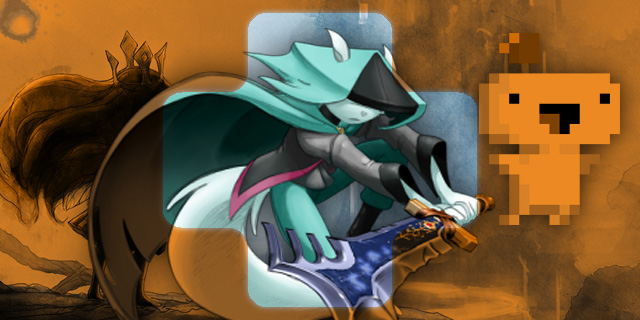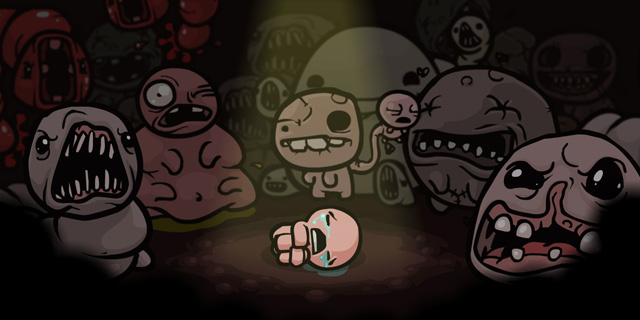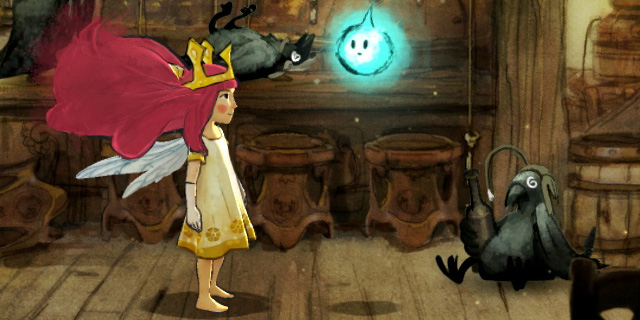
I often hear from some people that a game’s visuals are less important in the grand scheme of things. They don’t matter as long as the game is engaging or enjoyable in some regard. I once believed this, falling behind the same lazy credence when discussing certain titles. Nowadays, I find this belief silly. A game’s visual style can draw you into its world immediately almost as quickly as it can keep you away. It’s the most obvious thing, and yet it seems rarely discussed.
Games are praised for their visuals, sure, but an amazing, well-established art style can go a long way. Sometimes we tend to forget that.
I noticed this around the release of Dust: An Elysian Tail. Many criticized its art, specifically its character designs, and used that as a prime example of why they weren’t going to be playing it. The anthropomorphized designs turned many off immediately, and it was apparent how something so seemingly harmless can make or break a game for people. At the time, I questioned the logic of it. While it was a large part of the game’s aesthetics, it never really impacted the experience of actually playing it, right? Why did it matter?
I thought about it, realizing I ran into a similar situation myself a year earlier with The Binding of Isaac. I wasn’t a huge fan of Edmund McMillen’s style — something I learned after playing Super Meat Boy — but I found Isaac’s focus on gross imagery unpleasant to say the least. Yes, I know, it’s not meant to be pleasant, but that doesn’t make it any more appealing to me. I get it and I understand why people love the game, yet that was enough to turn me away from ever playing it. I did check it out briefly long after its release, but I was never able to get past the art style.

An example of a title that had the opposite effect on me is Fez, which was revealed many years before it finally released in 2012. All images and videos I saw of the game were immediately striking and its pleasant retro aesthetic made me want it immediately. I had no idea what kind of game it was, at least not at first, but it ultimately didn’t matter; Fez was a game I needed to play. I ultimately loved the game for many reasons, but would I have had the same reaction to it if it looked like The Binding of Isaac? I can’t really say for sure, but I’m willing to bet it wouldn’t be an experience I cherished.
This happened again recently with Hyper Light Drifter, an upcoming action RPG. Like Fez, it’s another retro-style indie game, but both titles stand out despite being part of a large, seemingly never ending movement of 8 and 16-bit inspired games. It’s not just about looking retro, it’s about looking distinct, and both games nail that perfectly. You can tell a lot of hard work (and heart) went into the visuals and that’s what’s most appealing.
While I haven’t run into too many other extreme examples of a game’s art style having a large impact on my experience (or interest), some can definitely help push it more towards being a memorable experience despite some flaws. Child of Light, the recently released Ubisoft RPG, is a perfect example. The writing is awful and the story is dull (despite its whimsy), but the game’s art style shines bright in an otherwise-standard, albeit fun, take on turn-based RPGs. To put it bluntly, if the game didn’t look as gorgeous as it did, I doubt I would even remember playing it a month from now.

Sometimes it’s hard to admit, or even understand, how much a striking art style can impact your experience with a game. Whether it’s positively or negatively, a title like Child of Light or Fez might not even be remotely the same game if their developers utilized a more generic, forgettable aesthetic. I used to not even think about it, but it impacted so many of my purchasing decisions in the past, so much so that I never picked up on it until years later.
A game doesn’t need to look pretty to be worthwhile or even well-received, but if you have an art style that stands out, or at least helps grab some attention, it will go a long way to making an experience more memorable. It may seem obvious now, but it can be easy to forget, especially with so many divergent art styles vying for your attention these days. Next time a game piques your interest based on visuals alone, be sure to make a mental note of it; it might be happening more often than you realize.



















